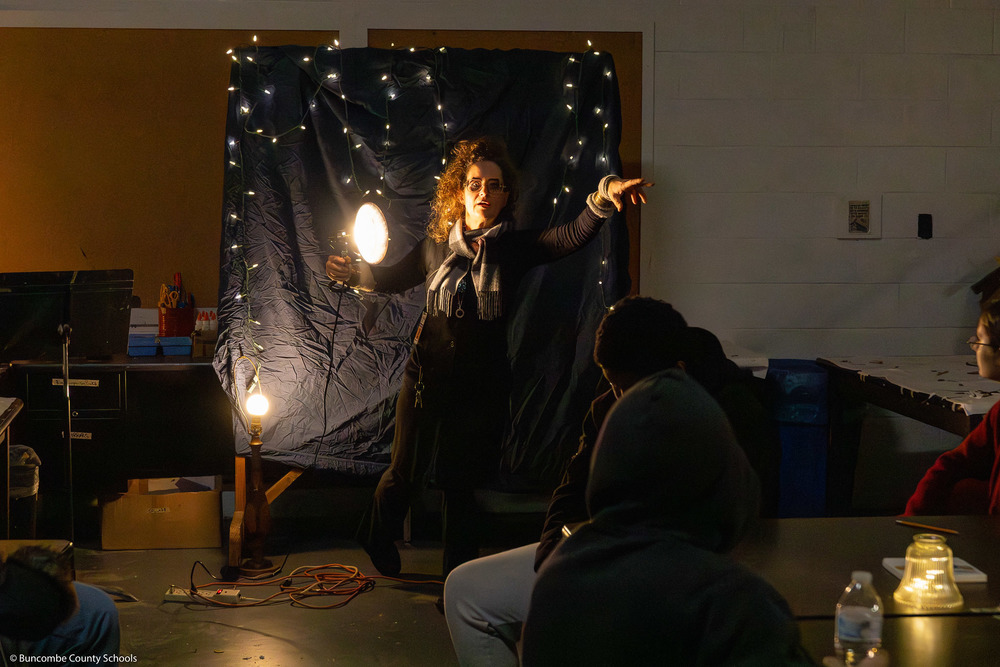🎭🎨🎃 At Clyde A. Erwin High School, students in Lissa Pedersen’s Art I class are taking art history off the page and into the studio.
After studying Leonardo da Vinci, Caravaggio, and the Renaissance evolution of light and form, students applied the dramatic chiaroscuro technique- Italian for “light-dark”- to portraits of their own teachers and administrators.
Ms. Pedersen filled her classroom with spooky decor and invited the school staff members to pose with props in front of prepared backgrounds. Using pencils, charcoal, and theatrical lighting, students captured striking contrasts of brightness and shadow reminiscent of film noir and early horror films, blending art history with seasonal creativity. The project built on earlier lessons about self-portraits, facial structure, and value scales, culminating in expressive works that emphasize mood, realism, and emotion.
“This connects art history to the now,” Pedersen said. “It shows how human beings have always used light and shadow to make ideas feel real and meaningful. The drama of chiaroscuro fits right in with the Halloween season.”
The volunteer models helped students practice rendering three-dimensional form on a two-dimensional surface, a technique first mastered in the Renaissance and still essential to visual storytelling today.
“It’s Halloweeny, but it’s also about emotion and realism,” Pedersen added. “Light and shadow change how we see and how we feel.”

